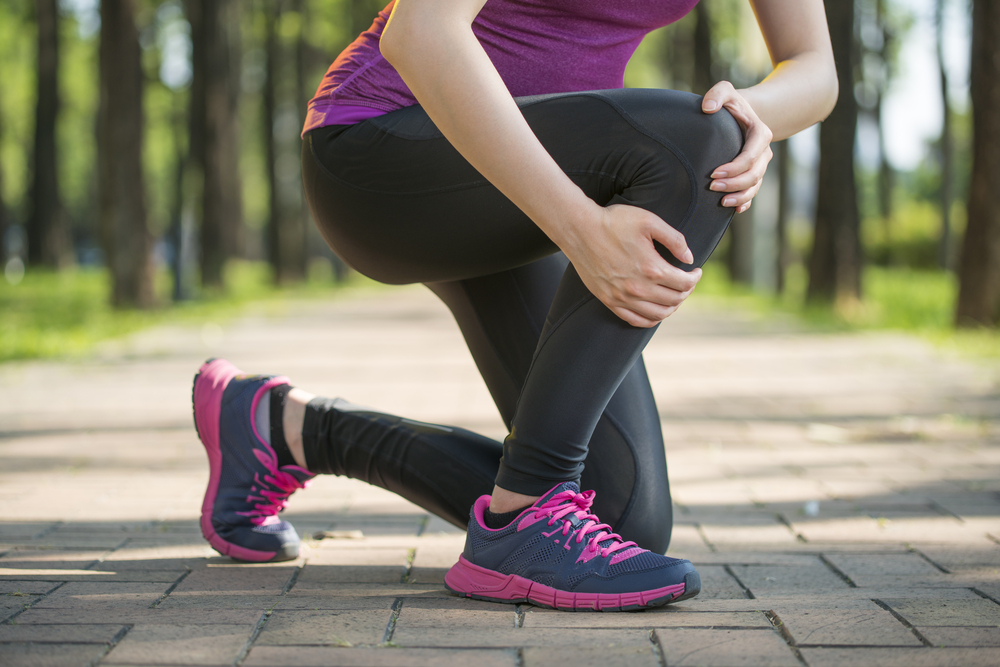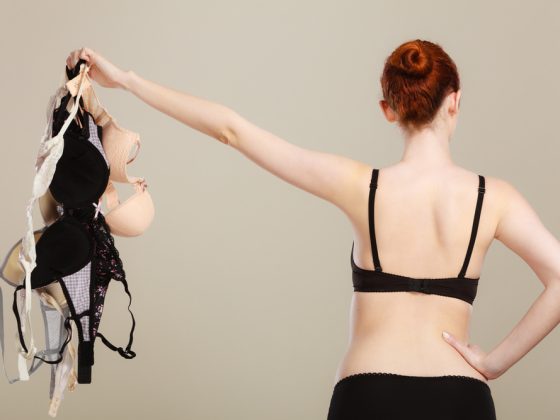Running is a great sport that many women enjoy participating in, either professionally or personally.
If you are a woman who runs regularly, you might be curious about several statistics when it comes to this popular sport.
One of the statistics that you might wonder about is what the average stride length for a 5’5″ woman is.
The average stride length for a 5’5″ woman is between 73″ and 86″, which is based on a study conducted by 100-meter specialists who determined the average stride of runners.
Of course, this is merely an average, and some female runners who are 5’5″ may have a stride that is outside this estimate.
Table of Contents
What exactly is stride length?

Stride length describes the distance you’ve gone when you take a series of steps, one with each foot.
Stride length is more or less the length, width, or amplitude of the distance you cover with a single running stride that includes two steps, the left and right.
Everyone’s stride length is different but in order to be a successful runner, the shorter the stride length, the better.
Who are some famous female runners?
If you don’t keep up with professional female runners, then you should be aware that there are many memorable ones.
One especially impressive Olympic female runner is Joan Samuelson, who is one of the fastest in the United States, and she continues to run faster than ever at her advanced age of 56.
Jackie Joyner-Kersee is another impressive female runner who is best known for her long jump in track & field during the 80s and 90s.
What’s the average age range of a female track & field runner?

The average age that a female runner begins her career is approximately the age of 11 while she’s in middle school.
Most female runners retire in their mid-30s, although there have been exceptions in which some have retired as late as 40, or even older.
These women are still young at the time that they retire, and they’re free to do whatever they desire with the rest of their lives.
Is it okay for an obese woman to start running as a way to lose weight?
Any woman beginning a new exercise program should consult with her personal care physician in order to determine if the new program will be safe.
An obese woman may have a difficult time running in the beginning, but as her body becomes more conditioned, she should be fine.
It’s best to walk in the beginning and then slowly switch over to running as she is able to tolerate it if her doctor gives her the green light.
Is it true that running is hard on the knees?

Extensive research has been performed on whether running is hard on the knees or not, and it has been determined that running is no harder on the knees than any other exercise.
However, there are exceptions to this, especially when it comes to individuals who opt to add running to their exercise regimen when they are overweight or have arthritis.
Running is definitely harder on the knees of people who are carrying around even five pounds of excess weight, as well as those with arthritis.
Running can also be a great way for overweight people to lose their excess weight, so as long as an overweight person obtains their doctor’s permission to start running and they start out slowly, then there shouldn’t be any problems.
People with pre-existing arthritic conditions could notice an improvement in their pain from running, and not necessarily worsening, so again, the person needs to obtain permission from their personal care physician and then start out slowly instead of jumping right into an intense running program.
Why is running so fun for some people?

Running can make a person feel like a kid again, which is light and free, but many people only run because it’s healthy or because they do it for a career.
Even runners who experience a runner’s high (a temporary feeling of euphoria after exercising moderately for an extended period of time) don’t necessarily believe that running is “fun.”
Most runners simply focus on the benefits of running, and that’s it.
Despite the fact that many people run simply for the sake of its many benefits, there are some people who truly enjoy running.
Even people who have never experienced a runner’s high still greatly enjoy this form of exercise because of the improvement that they notice in their mental clarity while running, as well as the ability to spend quality time alone.
Some people even consider running to be a form of meditation, since they’re running through sometimes beautiful and scenic parks while being able to focus on their own thoughts.
Are there regular runners who hate running?
Yes, there are people who run on a regular basis who hate running.
Many of these people will explain that the benefits of running outweigh the fact that they hate this form of exercise.
There are plenty of other exercises that could be done instead, but running is quick and easy to do, and there is no equipment necessary.
How long does it take to train for a marathon?

It can take as long as 26 weeks to properly train for a marathon, although some people who are able to take on more intensive training are able to become prepared in 12–16 weeks.
If you’re training for your very first marathon, it’s best to pace yourself, and if it takes a full six months in order to be prepared to complete a marathon, then you will be better off taking the entire time rather than trying to push yourself too quickly.
To prepare your body to run the 26.2 miles of a marathon, it’s important to start running a mile or two at a time and slowly increase the length of time you’re able to run.
What are the benefits of participating in marathons?
There are many benefits to participating in marathons, and for many people, running marathons becomes a regular part of their lives.
First of all, running marathons improves your overall health and dramatically decreases your likelihood of developing cardiovascular disease.
Additionally, running marathons can significantly improve your self-esteem, because even if you never win a marathon, merely crossing that finish line can really make a person feel amazed and proud about their achievement.
How can a woman increase her running speed?

There are many ways that you can increase your running speed.
First of all, you could add running up hills to your workouts, as this is a high-intensity anaerobic workout that can work wonders for improving overall performance.
Another way that you can increase your performance is by changing your training routine and refraining from running as your only source of exercise.
The body can become used to a certain workout that you’ve been doing for months or even years, and after a while, the body can stop progressing.
Add in some strength training routines and other types of cardio, so you can challenge your body and continue transcending.
Is 50 too old to start running?
You’re never too old to start running, and as long as your doctor gives you the green light, running can be a great way to prevent weight gain that many women experience during perimenopause.
You might be surprised to learn that there have been many women around age 50 and even older who have participated in, and even completed, marathons when they had never run before they became older.
Is walking just as healthy as running?

According to studies that have been conducted by various groups, walking can be nearly as healthy, and oftentimes even healthier, than running.
While people burn more calories by running, people who choose walking over running can cut their risk of developing heart disease in half.
How many fewer calories does a person burn by walking instead of running?
Running burns significantly more calories than walking does, as a nine-minute, 18-second, one-mile run burns approximately 91 calories for a woman.
In contrast, the same woman will burn only about 43 calories by walking for the same period of time.
This is why so many women opt to run as opposed to walking or performing any other type of exercise, even if they hate running.
The average stride length of a 5’5″ woman is between 73″ and 86″, although some women might fall outside of these parameters.
However, not many women focus on the length of their stride, as many simply focus on performing as optimally as possible.
Focusing on performing to the best of their ability is the goal of most women, especially those who compete professionally, but stride needs to be paid attention to while running because it can make the difference between having an injury-free experience and sustaining injuries on a regular basis.




